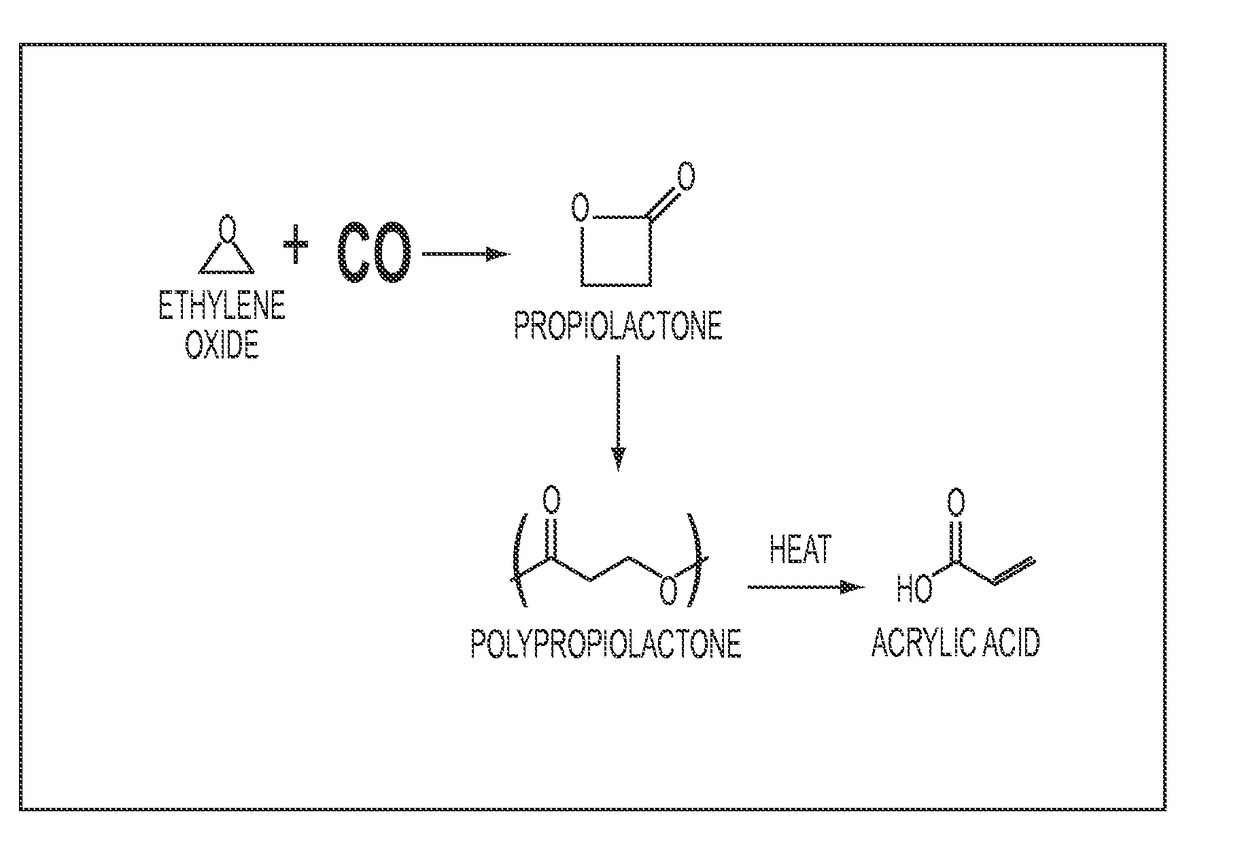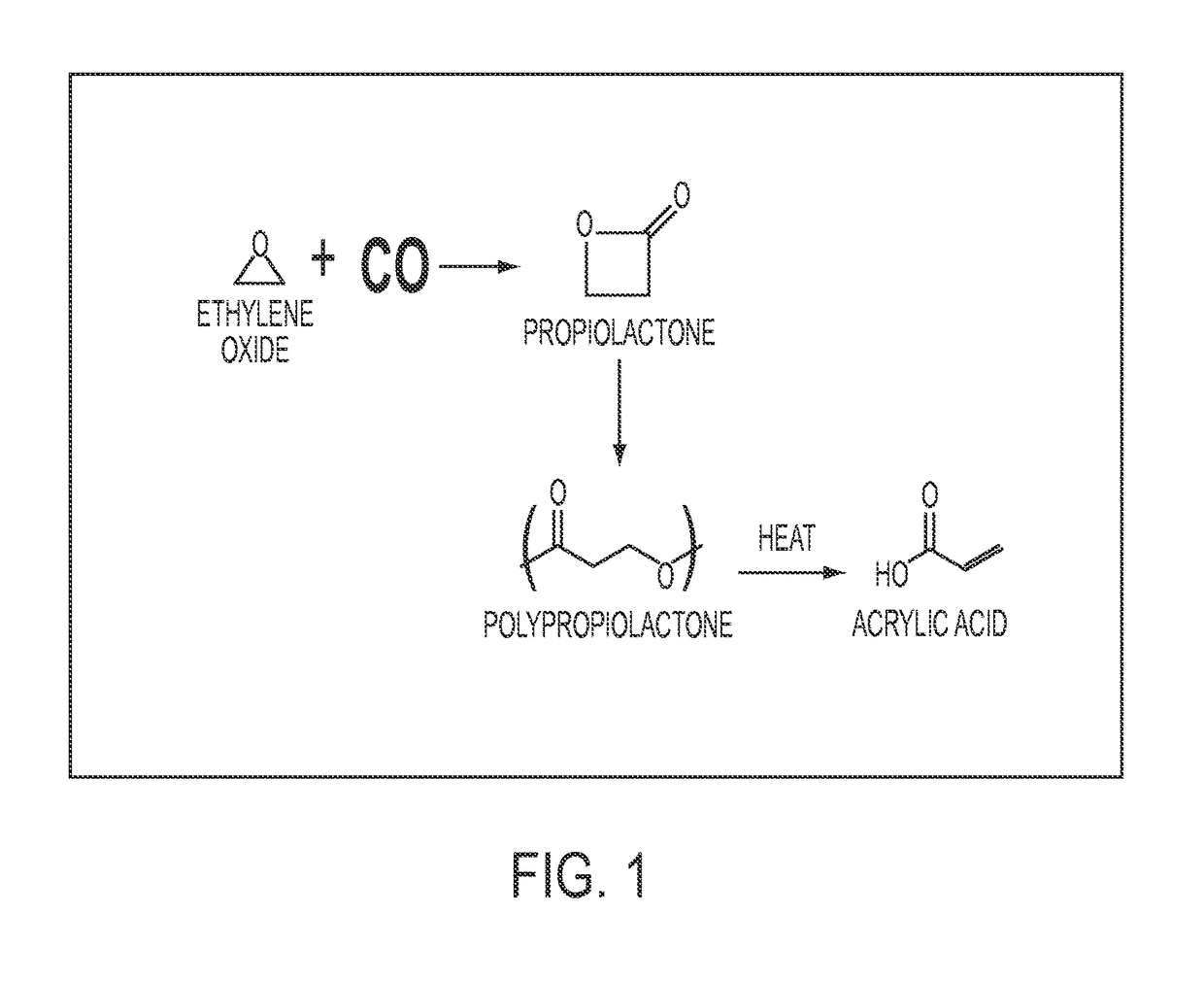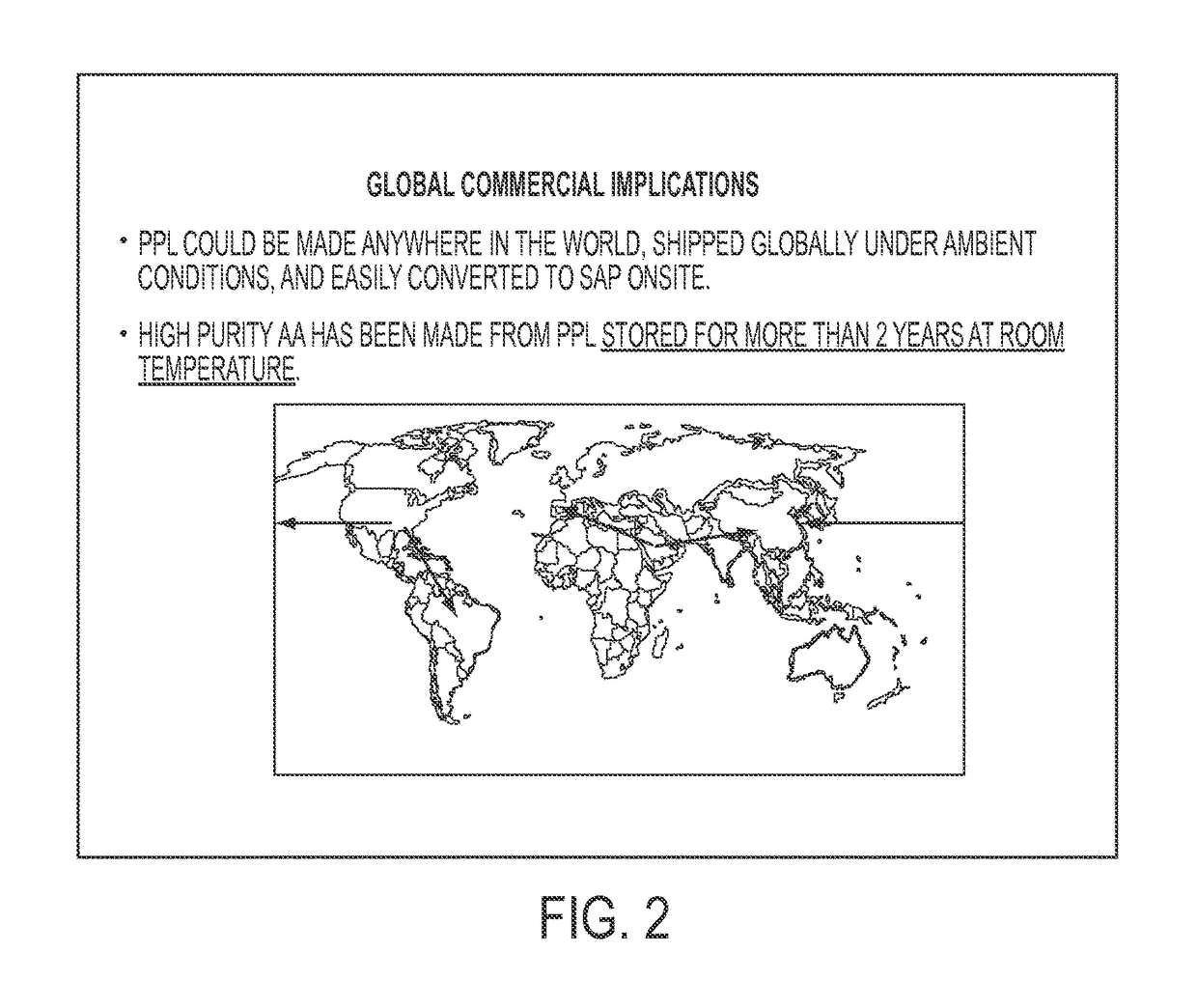Acrylic acid production methods
a production method and technology of acrylic acid, applied in the field ofacrylic acid production methods, can solve the problems of unsatisfactory acrylic acid stability, material can undergo unexpected violent polymerization reactions, and the polymerization of acrylic acid can be very violent, etc., to achieve safe transportation, less expensive, and high flexibility.
- Summary
- Abstract
- Description
- Claims
- Application Information
AI Technical Summary
Benefits of technology
Problems solved by technology
Method used
Image
Examples
examples 1-3
cale Preparations of Acrylic Acid from Ethylene Oxide Via Polypropiolactone
[0056]In this example, one chemical sequence having utility in methods of the present invention is performed at small laboratory scale.
Step 1: Carbonylation of EO and Polymerization of BPL.
[0057]Under dry nitrogen, a 300 mL Parr high-pressure reactor was charged with catalyst 1 ([(TPP)Al(THF)2][Co(CO)4], 286 mg, 0.3 mmol) and 85 mL of dry, deoxygenated THF. The reactor was heated to 45° C., agitated at 500 rpm, and pressurized to 150 psi with CO. After the reactor temperature stabilized, 13.5 g of EO (306 mmol) was injected under 600 psi of CO. the reaction mixture was maintained at 600 psi for 210 min after EO injection, then the CO pressure was slowly vented to ambient pressure. A solution of catalyst 2 was then added to the reactor (PPNTFA, 1.98 g 3.0 mmol in 5 mL of methylene chloride) under nitrogen. The mixture was stirred in the reactor at 45° C. for 16 hours. The polymerization was quenched by additio...
example 2
rylate as the Polymerization Initiator
[0059]
[0060]This example is performed under the conditions described in Example 1, except PPN acrylate is used as the polymerization catalyst. The polypropiolactone produced contains acrylate end groups and its pyrolysis liberates only acrylic acid.
example 3
f Polypropiolactone as Stable Acrylic Acid Precursor
[0061]This example is performed under the conditions described in Example 1, except the polypropiolactone is stored in air at room temperature for 1 year before pyrolysis. The yield and quality of the acrylic acid produced are unchanged from Example 1.
PUM
| Property | Measurement | Unit |
|---|---|---|
| distance | aaaaa | aaaaa |
| distance | aaaaa | aaaaa |
| distance | aaaaa | aaaaa |
Abstract
Description
Claims
Application Information
 Login to View More
Login to View More - R&D
- Intellectual Property
- Life Sciences
- Materials
- Tech Scout
- Unparalleled Data Quality
- Higher Quality Content
- 60% Fewer Hallucinations
Browse by: Latest US Patents, China's latest patents, Technical Efficacy Thesaurus, Application Domain, Technology Topic, Popular Technical Reports.
© 2025 PatSnap. All rights reserved.Legal|Privacy policy|Modern Slavery Act Transparency Statement|Sitemap|About US| Contact US: help@patsnap.com



